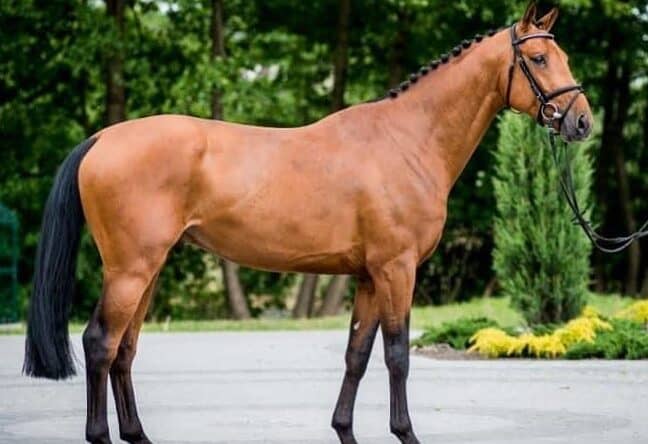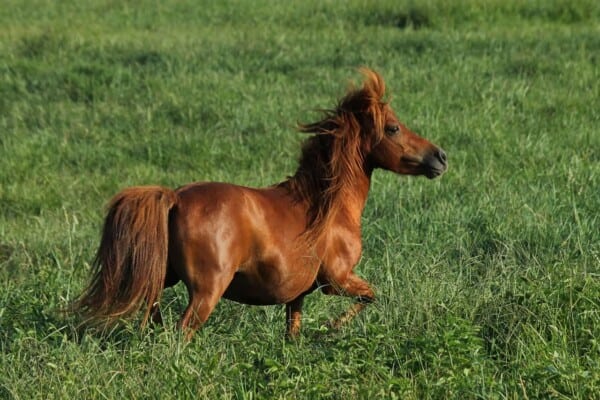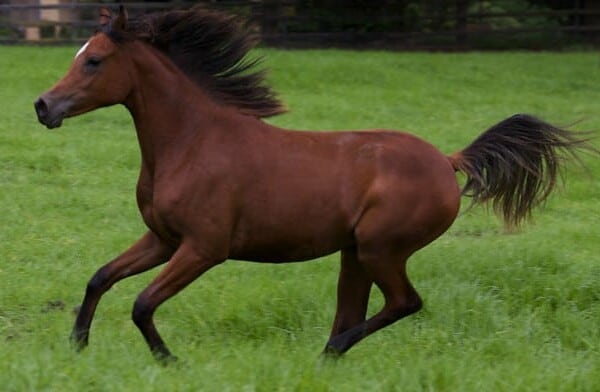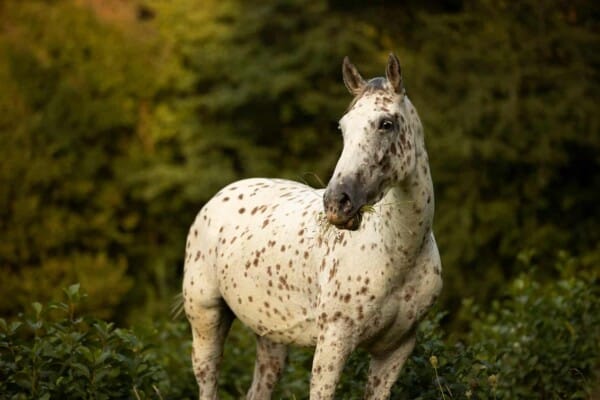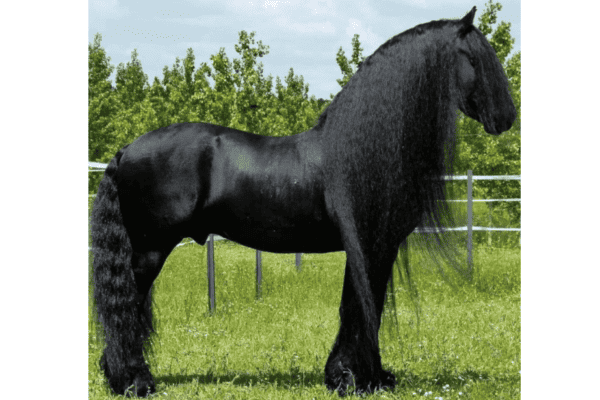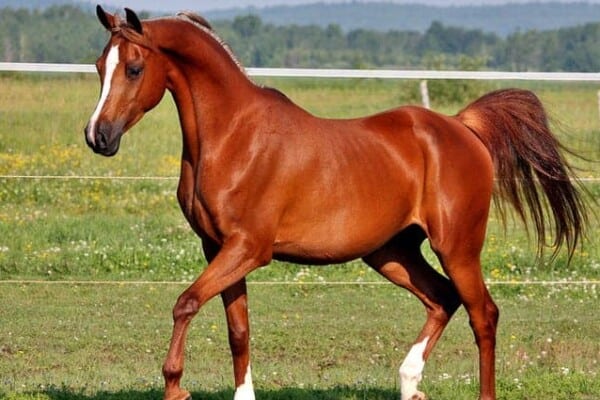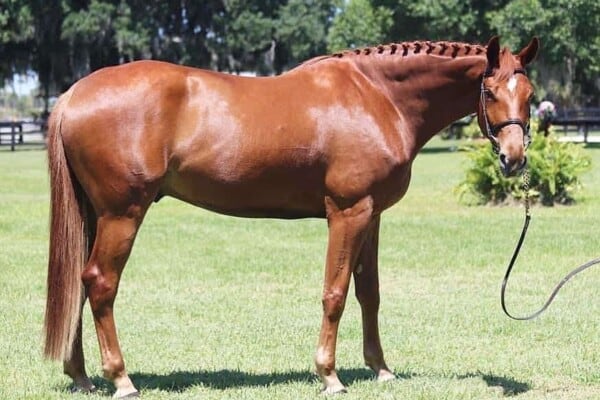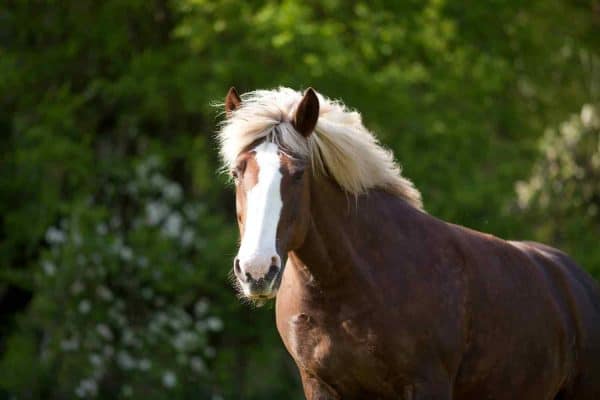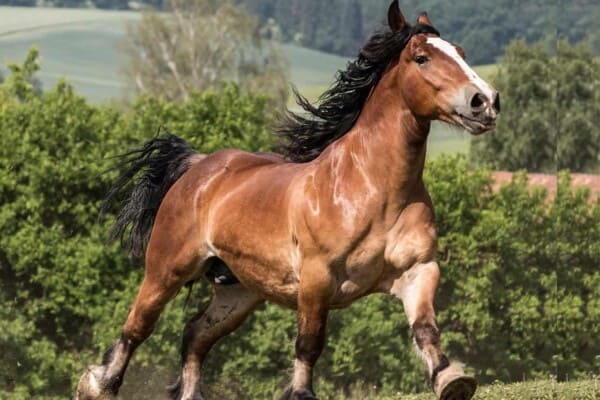When reading about horses, you may come across terms such as warmblood horse , cold blood horse, and hot blooded to describe certain types of horse. These terms can be confusing, as a horse can’t literally have cold blood or blood hotter than another horse. So what do these terms really mean, and why are different breeds categorized into these terms?
All horses, like any mammal, have a standard healthy body temperature. For horses, this temperature is 100 degrees Fahrenheit, slightly higher than that standard temperature for humans. These informal terms are actually used to group different breeds of horse by their temperament. For example thoroughbreds and Arabians are famously more energetic and nervous than other breeds and they are considered hot blooded. They are also lighter and significantly more athletic and agile which is why they are the desired breed for horse racing. In comparison the larger draft breed horses such as Percherons and Clydesdales are known for their calm temperament and are classed as Cold Blood Horses.
Warm blood horse breeds were produced by cross breeding hot blooded and cold blooded horses. These horses were bred to be more athletic than traditional cold bloods while still maintaining the calm temperament associated with cold blooded breeds. Today Warm Blood Horses dominate equine sporting disciplines such as dressage, driving, and eventing. When you hear the term “Warmblood” it is usually in reference to a specific subset of sport horse.
Cold Blood Horses
The term “Cold Blood Horse” refers to breeds traditionally used for farming and pulling carts. These breeds have their origins in Europe and date back hundreds of years. Cold blood horses are large and heavy, with lots of power and sturdiness. They can continue work over long periods, but in work that is slow-moving in nature.
Horses carrying out this type of work had to have calm, kind temperaments. They needed to be willing to work and not spook easily. Despite their size, cold-blooded horses are known for their easy handling. Breeds that fall into the cold blood category are primarily drafts. The Percheron is one of the largest draft breeds.
During Medieval times when soldiers wore lots of armor, cold blood horses were the desired mount. This was because their size and strength could carry the heavyweight of an armored rider over long distances. Their calm temperament was also essential when riding into battle.
Draft breeds can weigh as much as 2,600 pounds. They have heavy bones, and often have feathering on their legs. Cold blood horses also have a better ability to withstand harsh weather conditions than their hot-blooded cousins. Today, cold blood horses are still used for exhibition driving, such as the Budweiser Clydesdales. You will also find them on historic farms and as pleasure horses for riders who want to safely trail ride.
Cold blood horse breeds
- Percheron
- Clydesdale
- Shire
- Friesian
- Belgian draft
- Ardennes
Hot Blooded Horses
Hot blooded horses include breeds such as the thoroughbred and the Arabian and are known to be bold and spirited. They are usually bred for agility and speed and are slim and long legged. For this reason they are the preferred breeds for horse racing.
Throughout history European breeders imported these oriental horses from the Asia, The Middle East, and Northern Africa. Horses such as the Akhal-Teke, and the Turkoman were brought to Europe in an effort to infuse the athletic traits and spirited temperament from these horses into their own racing horses.
Hot blood horse breeds
- Thoroughbred
- Arabian
- Barb
- Akhal Teke
- Shagya
The Warmblood Horse
A warmblood is a type of horse developed by crossing hot and cold-blooded horses. Specifically they are a mixture of breeds that were previously bred as riding horses. Within the riding horse category, warmbloods are bred for specific disciplines, such as show jumping or dressage.
The vast majority of warmblood horse types were developed in Europe. When studying the pedigrees of these horses, the thoroughbred is seen the most. Hot-blooded horses were used to refine cold blood horses. The goal was to lighten their builds, create athleticism, and quicken reactions, while adding the temperament of cold-blooded horses for rideability.
Over many years the warmblood has become more and more refined. European studbooks have carefully bred for certain traits to create high-quality jumping and dressage horses. If you look back in the pedigrees of warmblood horses, you will see many repeated names. These foundation horses were used frequently for the characteristics they passed on.
The Trakehner is one of the earliest types of warmbloods. They were produced by mixing Arabians, Schweikens, and Thoroughbreds. The resulting horses were athletic and versatile. Because of this, they were used to create other European warmblood breeds, such as the Hanoverian.
As you would expect, warmbloods have a medium body build and medium bone. They can range in height from just over 14.2 to 17.2 hands. However, 15.2 and under is considered too small. Modern show jumping and eventing requires horses with lots of blood. The temperament of the warmblood can vary quite a lot. You will come across horses that are much closer to hot bloods in temperament, while others can have the chilled out character of a cold blood.
Warmblood Horse Foundation Breeds
As already mentioned Warmblood Horses were created by crossing cold and hot blood horses. Today there are many different types of warmblood breeds but there are only a few that can be considered as the warmblood foundation breeds.
The warmblood foundation breeds are as follows: Hanoverians, Holsteiners, Selle Français, and Trakehner. Here is a bit more info on these stunning breeds.
Holsteiner
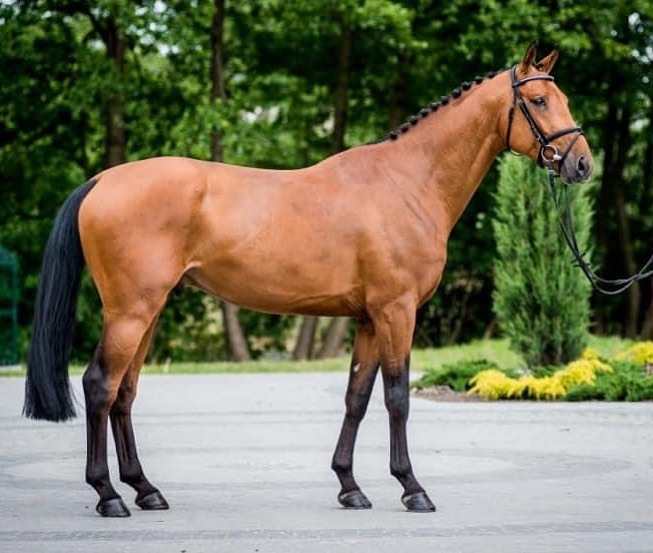 The Holsteiner breed can be traced back to the 13th century. They have a slightly heavier build than other European breeds. They have distinctive strong, arched necks, powerful hindquarters, and athletic movement. The majority of Holsteiner horses are bay, but they can also be black, grey, and sometimes a rare chestnut.
The Holsteiner breed can be traced back to the 13th century. They have a slightly heavier build than other European breeds. They have distinctive strong, arched necks, powerful hindquarters, and athletic movement. The majority of Holsteiner horses are bay, but they can also be black, grey, and sometimes a rare chestnut.
Cor de la Bryère is one of the founding Holsteiner stallions. His influence on dressage and jumping horses is evident in the thousands of horses that trace their lineage back to him.
The Holstein studbook is more famous for breeding jumping horses and has always played a dominant role in world jumping rankings. The studbook regularly ranks in the top in both international dressage and showjuming. When the studbook noticed they were lagging behind in dressage, they set out to change this. The studbook took the willingness to work, strength, quick reflexes, and excellent movement from their jumping horses and refined it for dressage breeding.
Some of the most successful dressage horses in the United States can claim Holsteiner breeding.
Hanoverian
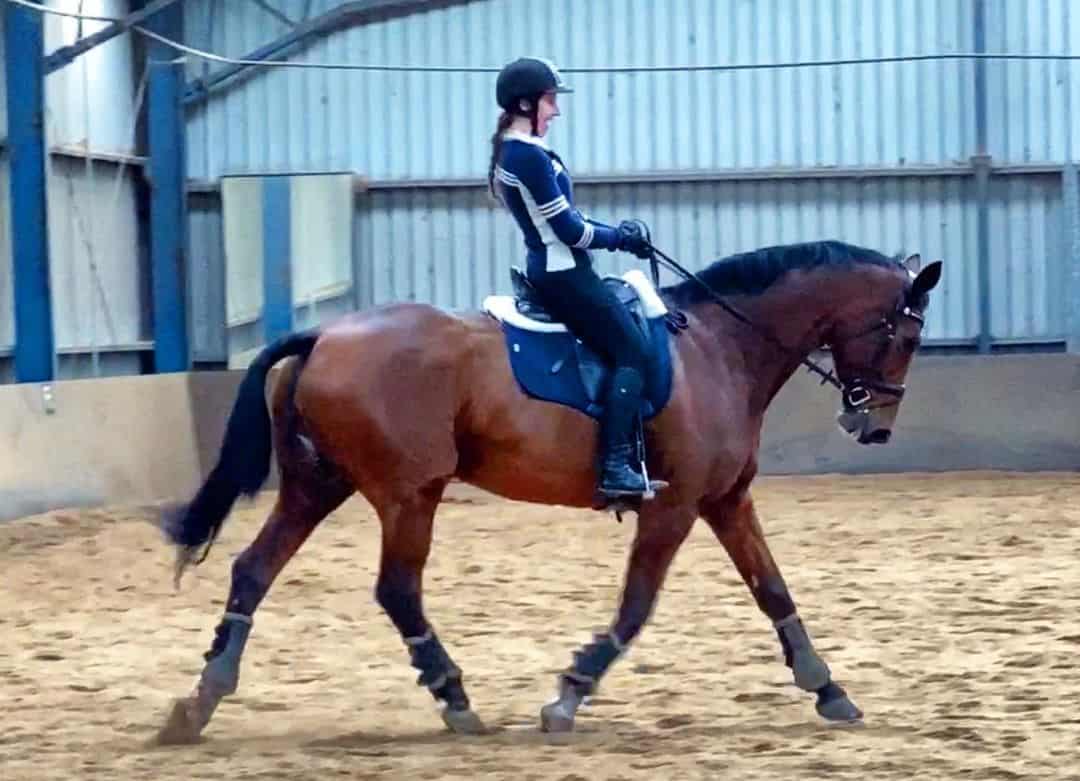 The Hanoverian is a powerful, athletic horse that excels in several equestrian sports, including dressage. They have strong bone, good impulsion, floating paces, and trainable personalities. Like Holstein, the Hanoverian studbook does not like horses with a lot of white markings. They are commonly bay, chestnut, grey, and black.
The Hanoverian is a powerful, athletic horse that excels in several equestrian sports, including dressage. They have strong bone, good impulsion, floating paces, and trainable personalities. Like Holstein, the Hanoverian studbook does not like horses with a lot of white markings. They are commonly bay, chestnut, grey, and black.
Hanoverians have been one of the most successful German breeds in dressage. The breed comes from the northern German region of Lower Saxony, once known as Hannover. The early Hannovarians were used for pulling carriages and as cavalry horses. The official Hanoverian studbook was established in 1888.
In the last 70 years, Hanoverians have won 11 individual Olympic dressage medals and been a part of 8 gold medal winning teams. They have also been part of numerous gold medal World Equestrian Games (WEG) teams. Weltmeyer and Donnerhall are the most famous Hanoverian dressage stallions, and together they have produced many champion horses.
The best horse breeds for dressage aren’t limited to the five we’ve covered here. Good dressage horses can be found in many breeds including, the Trakenher, Selle Francais, Irish Sport Horse, and Danish Warmblood. Remember, every horse can do some dressage. There are horses of every breed that break preconceived barriers of their abilities. You’ll even find some cobs that have successfully competed at high-level dressage!
Selle Français
 The Sell Francais is the main breed of jumping horses from France. It has developed from a variety of different breeds, including the thoroughbred, French trotter, Anglo-Arab, and native French horses.
The Sell Francais is the main breed of jumping horses from France. It has developed from a variety of different breeds, including the thoroughbred, French trotter, Anglo-Arab, and native French horses.
The breed has strong ties to Normandy and the vast majority of the of Selle Francais breeding takes place in this region..
Today, they are bred as purely sport horses and excel in a variety of disciplines. The stallion Alme Z is one of the most influential modern foundation jumping stallions for Selle Francais as well as other European jumping breeds.
Trakehner
The Trakehner is a light warmblood that orignated from Schwaike horses in East Prussia. They began to be developed in the 13th century, and in 1732 the Friedrich Wilhelm II ordered the establishment of the Royal Stud at Trakehnen.
They are known for being very athlethic and very trainable and for this reason they compete in nearly every equestrian discpline. They have been particualy successful in dressage and thanks to their sensitivity, excellent canter, and power in their hindquarters. They are also known for their famous “floating trot” which often seems like the horse does not quite touch the ground when striding.
Unlike the other foundation warmbloods, the Trakehner can be considered to be a true breed. Other registries accept breeding stck from other similar breeds to improve their stock but they do not consider their horses to be a discrete breed. The Trakehner is an exception in this regard,

